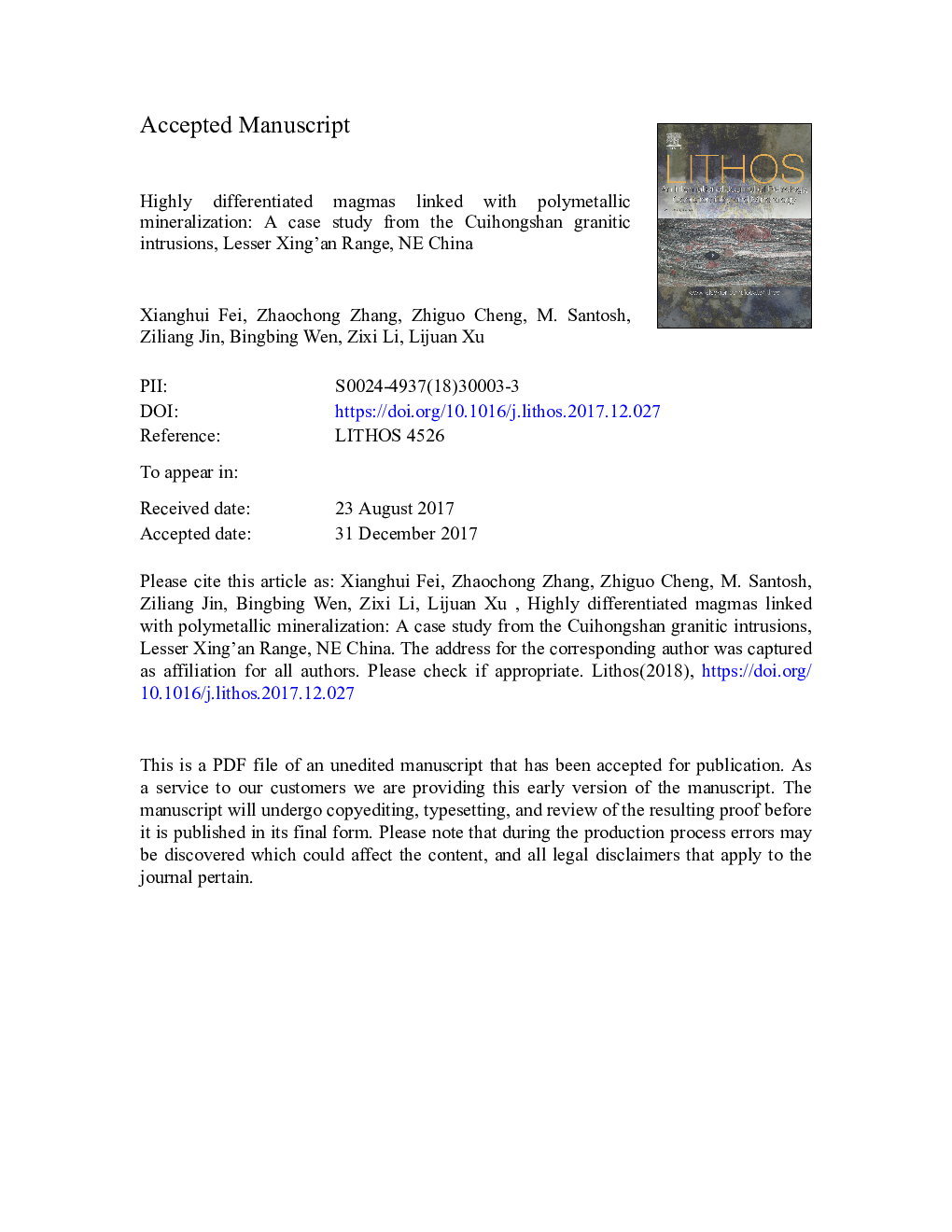| Article ID | Journal | Published Year | Pages | File Type |
|---|---|---|---|---|
| 8911696 | Lithos | 2018 | 84 Pages |
Abstract
The genetic link between granitoids and polymetallic skarn mineralization has remained equivocal. The Cuihongshan skarn-porphyry W-Mo-Pb-Zn-(Fe-Cu) deposit in the eastern part of the Central Asian Orogenic Belt provides a unique example to address this issue. The major rock types in the mine area are Early Paleozoic intrusions composed of biotite syenogranite and biotite porphyritic granite and Early Mesozoic intrusions represented by porphyritic quartz monzonite, biotite monzogranite, and porphyritic granite. The diagnostic mineralogical and geochemical features indicate that the rocks belong to A2-type granites. The Early Paleozoic suite shows zircon U-Pb ages of ~ 501 Ma, and εHf(t) values of â 4.4 to + 2.7 and + 2.4 to + 7.6, respectively. In combination with their coherent geochemical trends, these rocks are inferred to be products of in-situ differentiation. Although the Mesozoic suite shows crystallization ages of 194-196 Ma, εHf(t) values are in the range of â 2.5 to + 7.5 for the porphyritic quartz monzonite, the â 1.8 to + 4.5 values for the monzogranite and the + 2.3 to + 8.0 range for the porphyritic granite. The porphyritic quartz monzonite displays distinct mineral assemblage and shows significant compositional gap with the other two lithofacies. In contrast, the monzogranite and porphyritic granite have similar geochemical features, and are thus inferred to be co-magmatic. Considering the high SiO2 contents, variable εHf(t) (â 4.4 to + 8.0) and εNd(t) values (â 8.4 to + 0.28) for the two suites, we infer that both episodes of granitoid magmatism resulted from partial melting of crustal materials with a mixed source containing varying proportions of juvenile and Precambrian crustal components. The Early Mesozoic porphyritic granite shows a highly evolved F-rich geochemical affinity, and experienced magma-fluid interaction. Cassiterite from the calcic skarn and the magnesian skarn that coexists with magnetite orebodies shows a mean U-Pb age of 195.4 ± 1.9 Ma and 191.2 ± 7.5 Ma respectively, indicating that the mineralization is genetically related to the Mesozoic granitic rocks. We infer that halogen-rich magmatic-hydrothermal fluids were derived from the Early Mesozoic highly fractionated magma, and the spatial association of the metallic elements with different geochemical behavior in the Cuihongshan deposit is correlated to multiple stages of evolution of halogen-rich magmatic-hydrothermal fluids.
Keywords
Related Topics
Physical Sciences and Engineering
Earth and Planetary Sciences
Geochemistry and Petrology
Authors
Xianghui Fei, Zhaochong Zhang, Zhiguo Cheng, M. Santosh, Ziliang Jin, Bingbing Wen, Zixi Li, Lijuan Xu,
